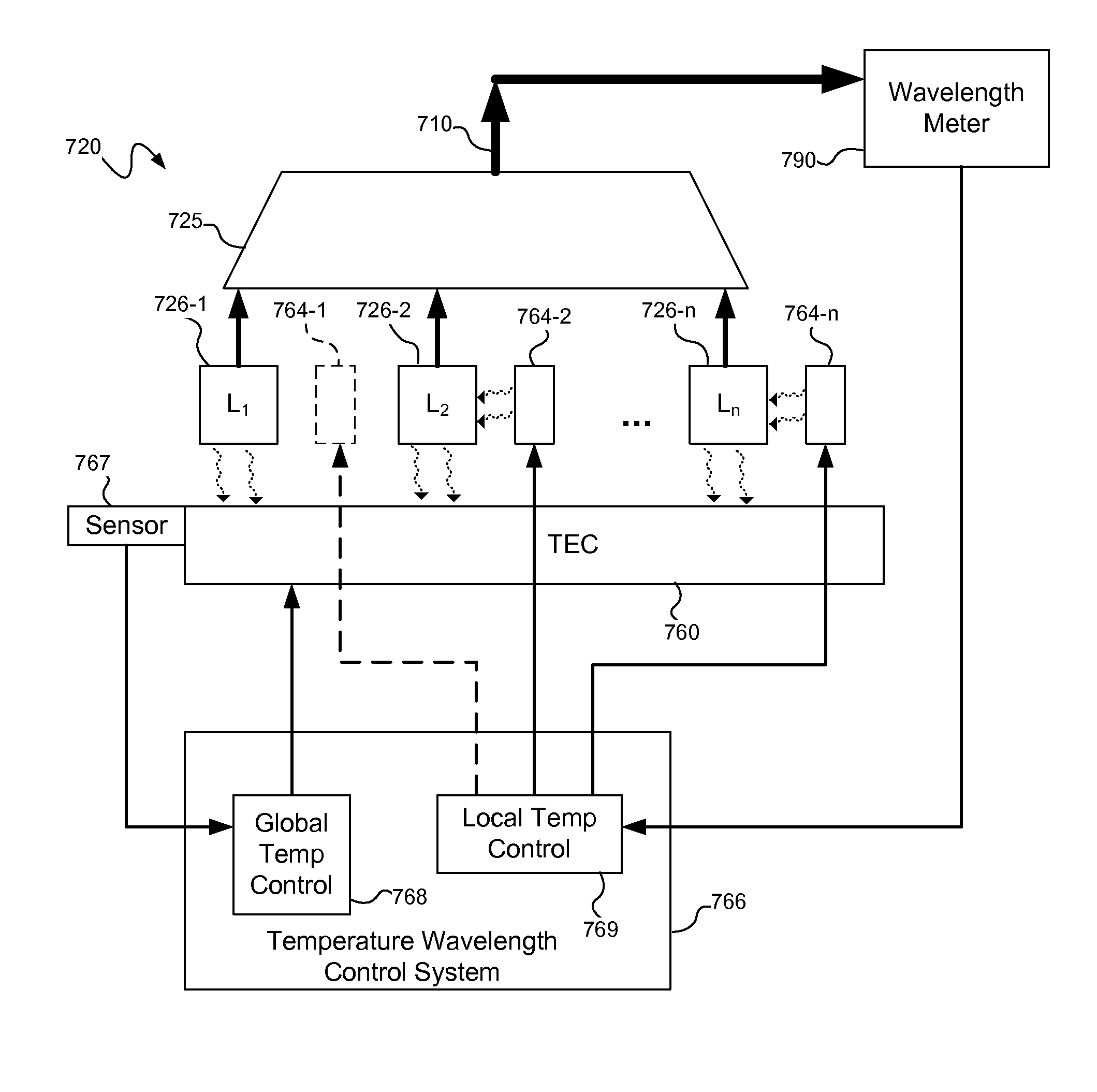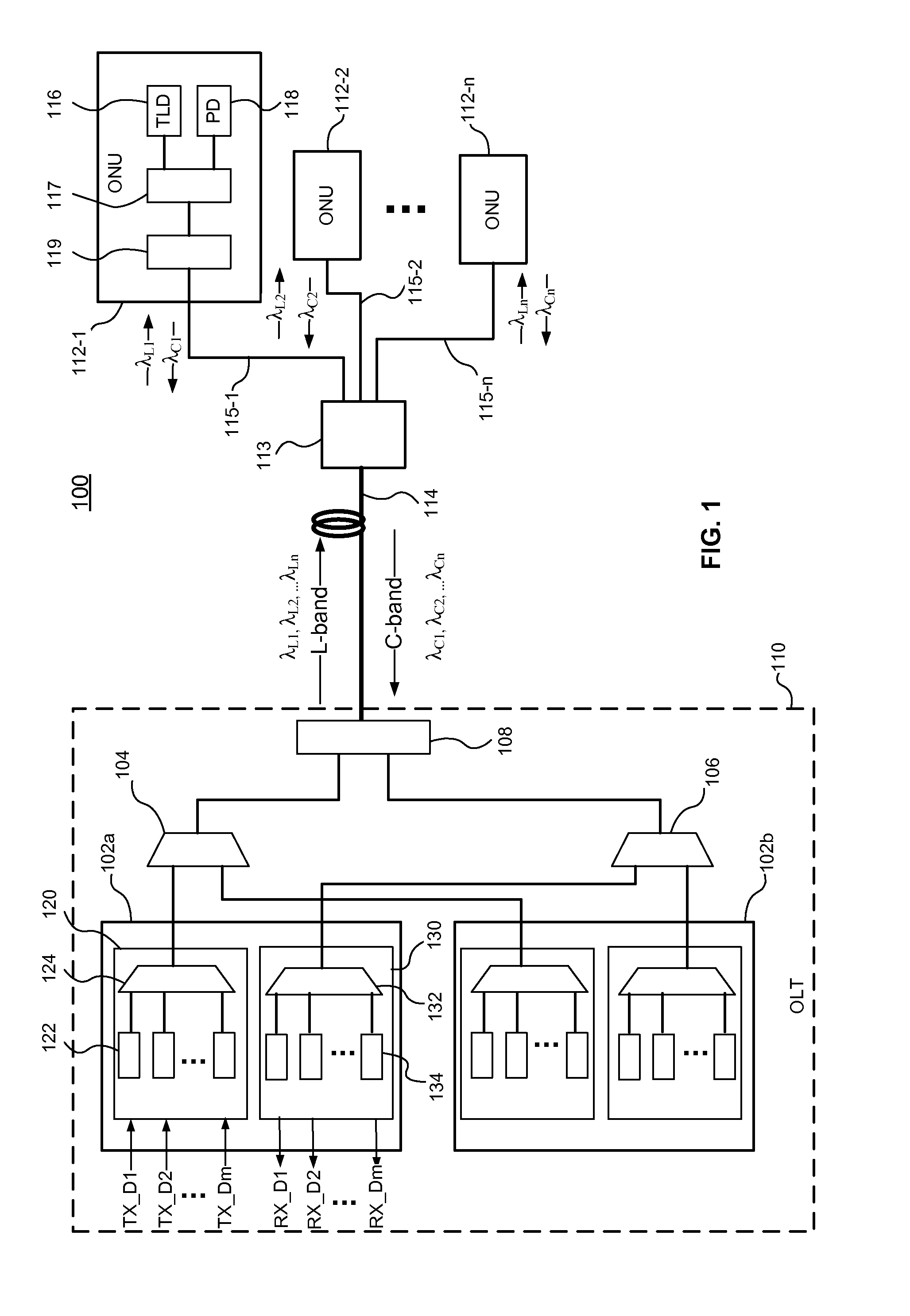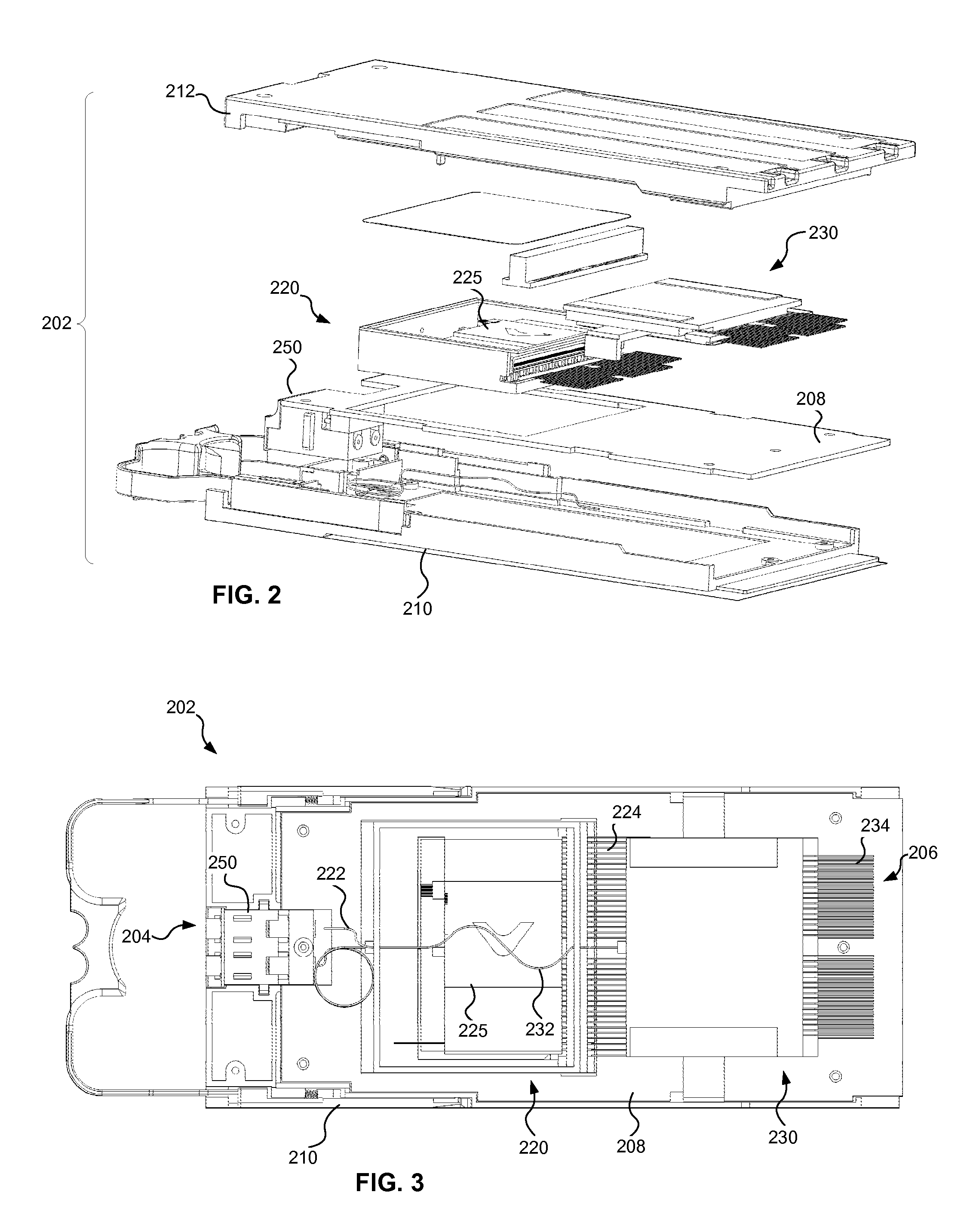Temperature controlled multi-channel transmitter optical subassembly and optical transceiver module including same
a multi-channel transmitter and optical sub-assembly technology, applied in the direction of electromagnetic transceivers, electromagnetic lasers, electromagnetic transmission, etc., can solve the problems of complex deployment and management of many fibers, increased cost, and increased complexity of closed loop systems. , to achieve the effect of reducing the cost of the closed loop system
- Summary
- Abstract
- Description
- Claims
- Application Information
AI Technical Summary
Benefits of technology
Problems solved by technology
Method used
Image
Examples
Embodiment Construction
[0015]A temperature controlled multi-channel transmitter optical subassembly (TOSA), consistent with embodiments described herein, may be used in a multi-channel optical transceiver. The temperature controlled multi-channel TOSA generally includes an array of lasers optically coupled to an optical multiplexer, such as an arrayed waveguide grating (AWG), to combine multiple optical signals at different channel wavelengths. The lasers may be thermally tuned to the channel wavelengths by establishing a global temperature for the array of lasers and separately raising local temperatures of individual lasers in response to monitored wavelengths associated with the lasers. A temperature control device, such as a TEC cooler coupled to the laser array, may provide the global temperature, and individual heaters, such as resistors adjacent respective lasers, may provide the local temperatures. The optical transceiver may be used in a wavelength division multiplexed (WDM) optical system, for e...
PUM
 Login to View More
Login to View More Abstract
Description
Claims
Application Information
 Login to View More
Login to View More - R&D
- Intellectual Property
- Life Sciences
- Materials
- Tech Scout
- Unparalleled Data Quality
- Higher Quality Content
- 60% Fewer Hallucinations
Browse by: Latest US Patents, China's latest patents, Technical Efficacy Thesaurus, Application Domain, Technology Topic, Popular Technical Reports.
© 2025 PatSnap. All rights reserved.Legal|Privacy policy|Modern Slavery Act Transparency Statement|Sitemap|About US| Contact US: help@patsnap.com



